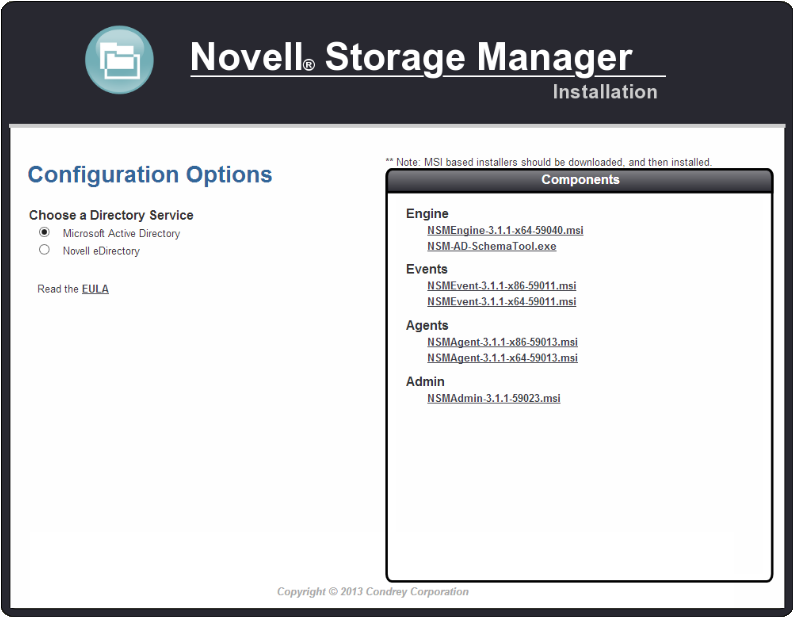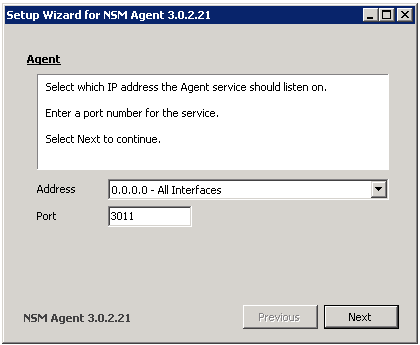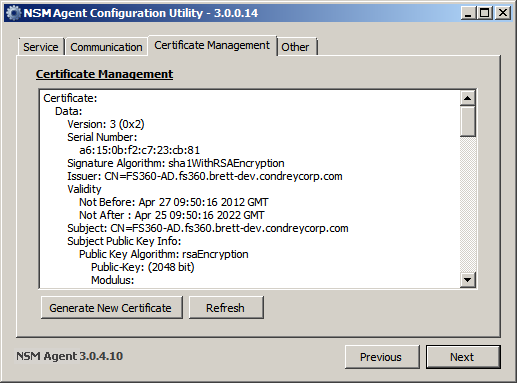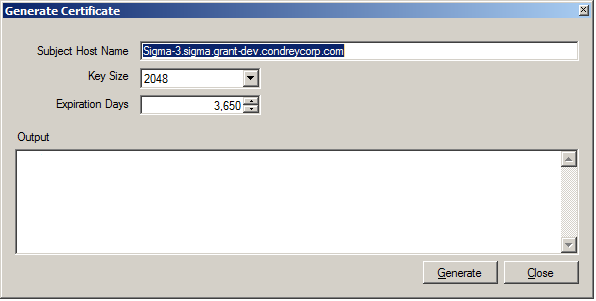5.7 Installing and Configuring an NSM Agent
An NSM Agent can be installed on a Windows machine that meets the following minimum requirements:
-
Microsoft Windows Server 2012 (Member or DC Server)
-
Microsoft Windows Server 2008 SP2 or R2 with an x86 or x64 processor (for deployment with quota management) (Member or DC Server)
-
Microsoft Windows Server 2003 SP2 or later with an x86 or x64 processor (for deployment without quota management)
-
Windows 7 or later with an x64 processor
-
.NET 3.5 Framework and .NET 4.0 (Full) Framework installed
-
For quota management, Microsoft File System Resource Manager (FSRM) must be installed
IMPORTANT:In cases where managed storage may include redirected folders, such as “My Documents” or similar types commonly seen with managed Profile Paths, a Windows Server hotfix (http://support.microsoft.com/kb/973278) will need to be applied to any Engine and Agent servers involved in the data copy process. This hotfix only applies to the following platforms where the Engine or an Agent is installed:
-
Windows Server 2008
-
Windows Server 2008 SP1
In cases where this hotfix has not been applied to the affected systems, symptoms may include stuck Copy Data pending events with the message: Current Error - 32: The requested operation is not supported in the properties for that event as well as the error message identified by the hotfix “0x00000032 (ERROR_NOT_SUPPORTED)” appearing in the log file of the Engine or Agent that tried processing the data copy.
Other notable information about NSM Agents:
-
An NSM Agent runs as a native NT service that is configured to start by using the Local System account
-
The default NSM Agent port is 3011
-
A firewall inbound rule for the NSM Agent is created during the installation
-
At the root of the NSM_3_1_1.iso image, click the install.html file.

-
Select
-
Click one of the following NSM Agent installation files:
-
-
When asked if you want to save or run the file, save the file to the hard drive of the server that will host the NSM Agent.
-
From the saved location, launch the NSM Agent installation file.
-
When you are asked if you want to run this file, click .
An introduction page appears in the Setup Wizard.
-
Read the text on the page and click .
-
Accept the license terms and click .
-
Accept the installation path or indicate a new path by using the button.
To review possible locations, you can click to see all available volumes with disk size and disk availability data.
-
Click .
-
Click .
-
Leave the check box selected, then click .
The following page appears:

-
Specify the IP address of the server hosting the NSM Agent. Unless there is a port conflict, leave the port setting at 3011 and click .
-
Leave the check box selected and click .
Novell Storage Manager creates a unique private certificate.

-
Do one of the following:
-
If you want the server on which you are installing the NSM Agent to function as the certificate server, click , , and then . Then proceed with Section 5.8, Authorizing the Event Monitor.
-
If you want a different server in the network to issue the certificate and function as the certificate server, continue with Step 16.
-
-
Click .

-
In the field, specify the desired server name.
-
In the field, leave the default setting of 2048 or select the key size you want.
-
In the field, leave the setting at 10 years (3,650 days) or specify a new setting.
-
Click .
-
Click .
-
Click .
-
Proceed with Section 5.8, Authorizing the Event Monitor.